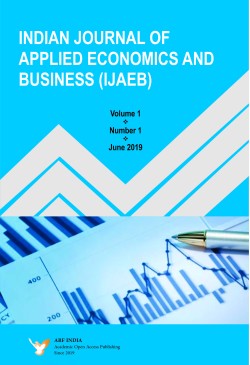The present paper estimates the drivers of education spending of households across economic groups. The questions that are explored include: (i) does expenditure on education vary across economic groups and over time? In other words, whether expenditure elasticity varies by levels of income and over time? (ii) The subsidiary question is to understand the gender bias in education spending across these groups? As a corollary to this, at which levels of education and to what extent the gender bias in expenditure on education is estimated using the hurdle model. The paper uses the NSSO survey data of 52nd, 64th and 71st rounds, relating to schedule 25.2, on Social Consumption: Participation in Education. Based on the expenditure elasticity, it has been found that middle class spend proportionately more than bottom (justifiably) but also at the top expenditure quintiles. The difference between middle and top expenditure groups elasticity is marginally advantageous to the middle and the gap widening in the 71st round. This emerging middle class and their aspirations for education and upward mobility is noticeable. Years of schooling of the head of the household has a positive and significant probability of family spending on education over expenditure classes and across time. Point to be noted is in the middle expenditure group, the average effect is more compared to top expenditure category, like the one observed in per capita consumption expenditure. Yet another significant factor the skill type of the head of the households. Skill type, depict that positive and significant the probabilities of family spending on education over full and sub-samples.
The caste dummy, that being SC/ST (socially deprived section of the population) statistically and significantly reduces the probability of spending on education across the board. Children who reside in rural areas (D_sector) spend less family expenditure on education compared to those who live in urban areas. The female bias in 10-14 age group is quite substantial and has widened in 2014 compared to previous years. In age class pertaining to secondary schooling 15-19, the female bias is apparent, compared to earlier rounds of data 1995-96, extended. There is clear statistically significant gender bias across expenditure groups. The bias is though prevalent across expenditure groups, seems to have more among the bottom expenditure class compared to middle and top expenditure groups. This phenomenon is found across all three rounds of data, indicating that gender bias had remained during the two decades. The moot question here is will this gender bias alter? If transforms, when will it alter and how long will it take for such change? In the absence of such a move, what ought to be the government’s policy towards financing of education especially on girls given the immense positive externalities of girls’ education?
Keywords: Family spending, spending on education, income groups, NSSO, gender
P. Geetha Rani & R. Gopinathan (2023). What Factors Determine Family Spending on Education in Indian and Does it Vary across Well-being Measures?. Indian Journal of Applied Economics and Business. 5(2), 259-289. https://DOI:10.47509/IJAEB.2023.v05i02.1
